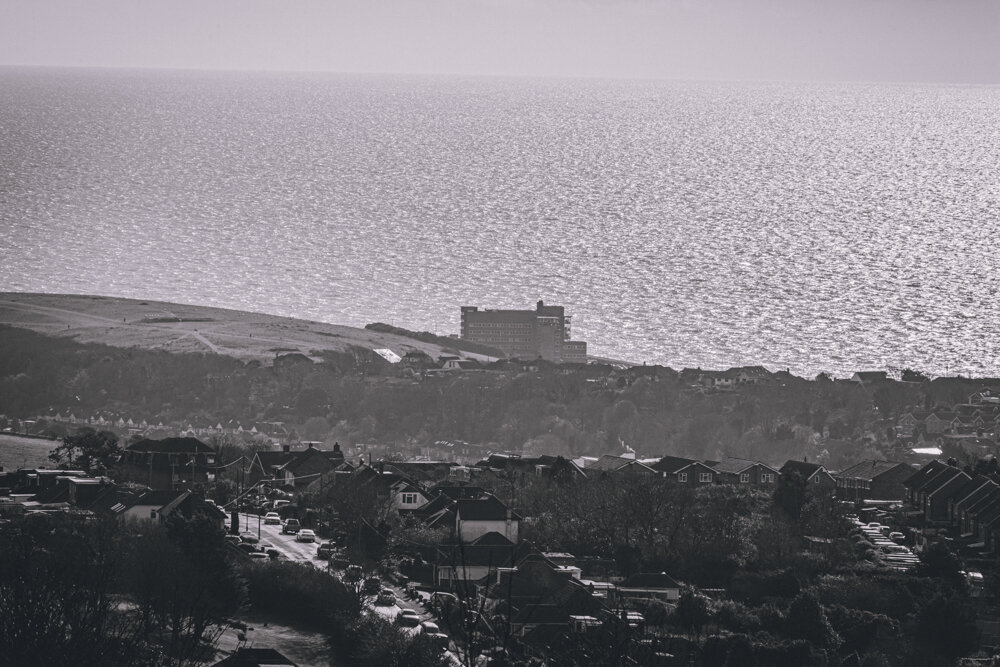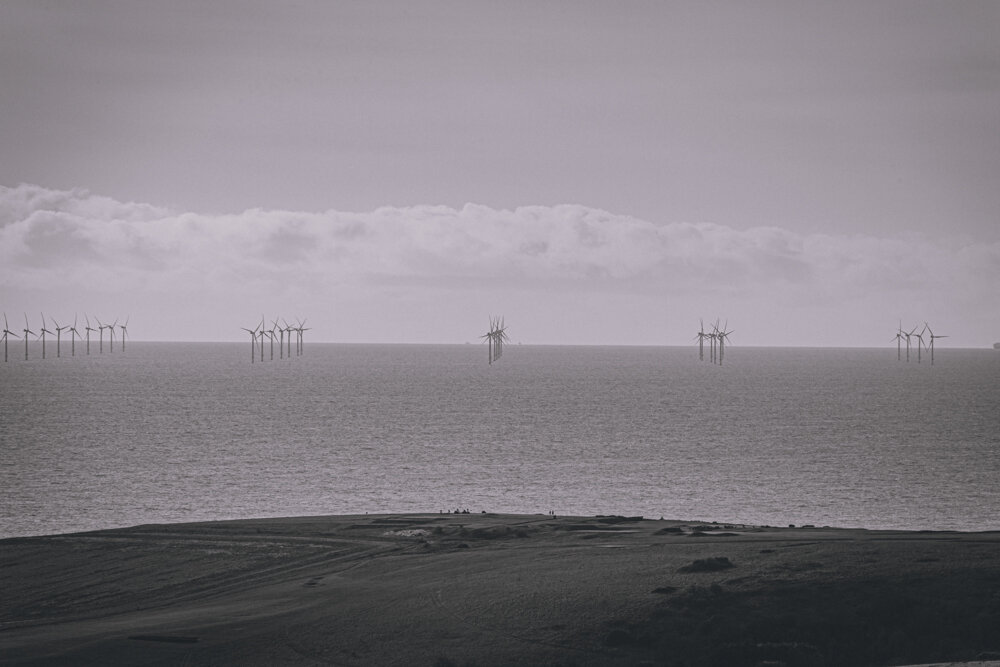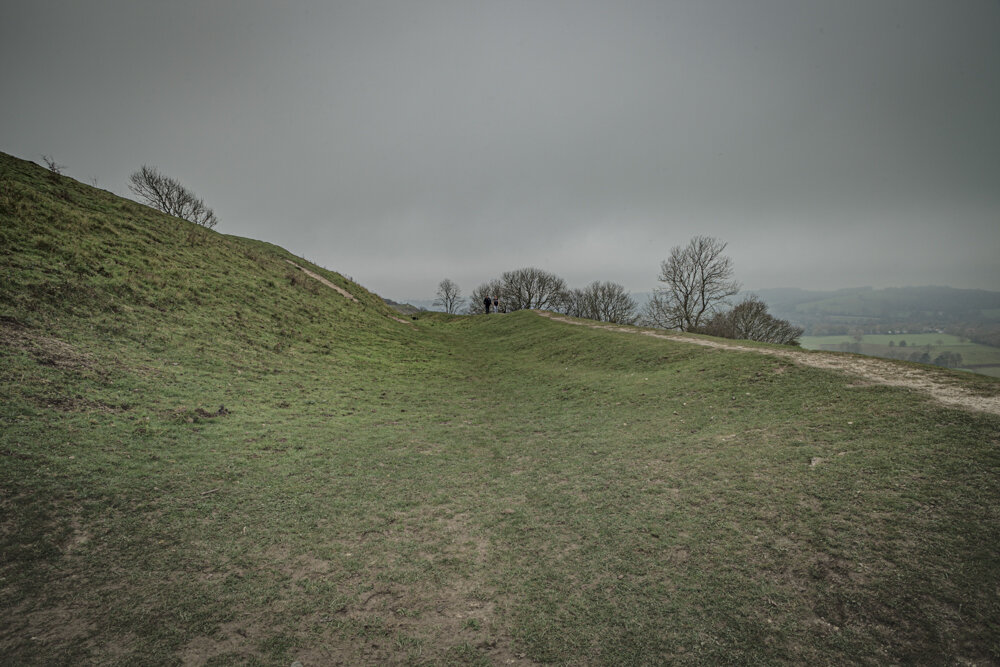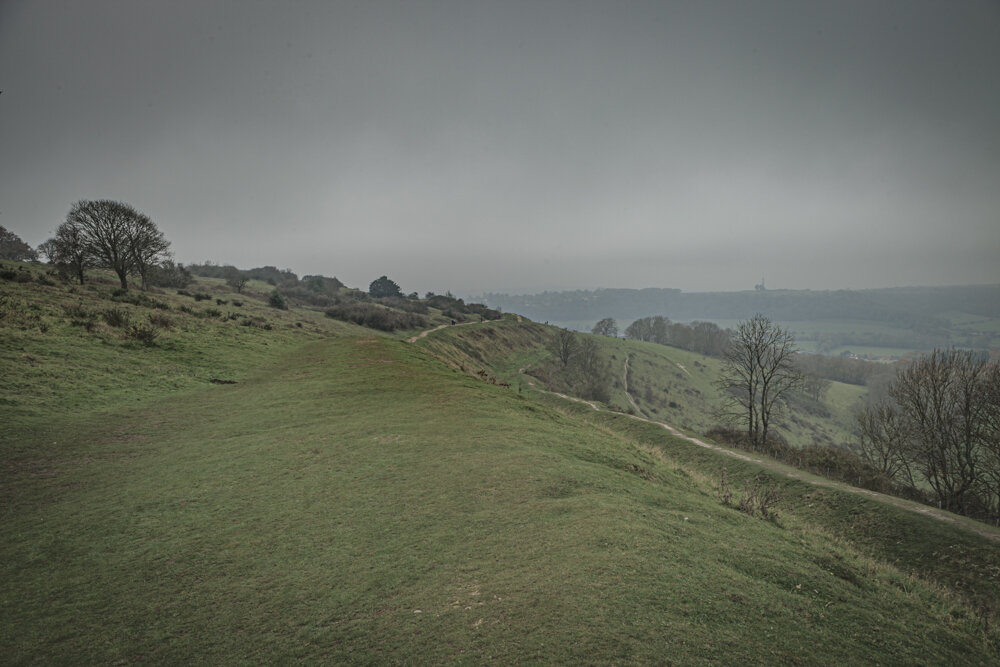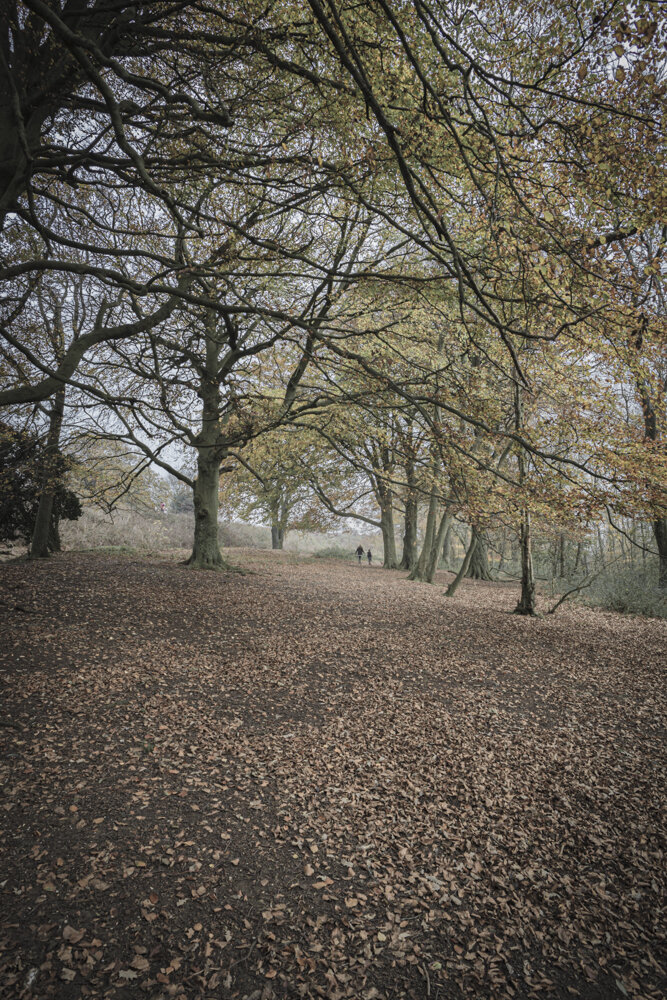Updated my website.
Read MoreFirst Semester Completed!
Well the last two months has been a bit of a slog, instead of taking more photos I spent most of the time writing.
Read MoreShoot 5
Fifth Shoot: - 21st November 2020
Following on from the conclusions of the previous shoot I walked north along the river Adur outside the villages of Upper Beeding & Bramber. I had my repaired tripod and a cable release as well as my Nikon D7100.
As I had mentioned in the conclusions part of the previous shoot I chose to shoot at a fixed aperture & shutter speed letting the camera decide the ISO, it was a cloudy day so I did have a little concern that any shots I took would be very grainy and full of noise.
Unlike the previous shoot I will try to get back to using leading lines to take the “viewer” to the person(s) in the landscape.
Conclusions
At the start of this shoot I was concerned that my images would be full of noise and basically not look “good”.
I have to say I was pleasantly surprised by the results, most of the shots were taken at ISO 1100 which the camera dealt with quite well. I didn’t have to do much in the way of adjustments – a little noise reduction was needed as there was a bit of noise but no where near as much as I thought there would be.
There was more colour in the scenery that I had expected (green grass) and because of the recent wet weather all the tracks were quite muddy giving a nice contrast to the grass. The only downside was the heavy cloud, it would have been nice to have some sunshine but I’ll take what I can considering the time of year it is.
So having tried a fixed aperture (F11) & shutter speed (500th of a second) I think I will stick to this method so that I freeze as much movement in the scene as possible with as much detail as possible.
The only other area to experiment with now is the time of day I shoot - early morning or early evening.
Shoot 4
Forth Shoot: - 13th November 2020
After getting some feedback on one particular photo I re-edited it. I cropped the top and bottom of the photo and changed it from black & white to colour. I posted it up on my 500PX site and it got a lot more views, likes and comments which I wasn’t expecting.
Later on in the week (as above title suggests) I went to my next location which was the South Downs above Woodingdean just outside Brighton.
My tripod was “in the shop” so to speak so I had to resort to using a monopod instead combined with a different lens (stabilised), my hope was that this combination would be good enough to get the same kind of sharpness as in my previous shoot (which was on a tripod). In some of the shots I experimented with dropping the aperture down from f.11 to f.8 to see if I could get a faster shutter speed and thus sharper images.
I also decided I would do both black & white and colour versions of the same images to see which works best. The intention being so I can then nail down weather I will stick to black & white or colour for the project to keep a consistent aesthetic.
Conclusions: -
I found it hard to find the right kind of compositions that had come so easily in the previous shoots. There were less people and the terrain posed a challenge. I found myself taking telephoto shots of the coastline with tiny specs of people in the landscape so no leading lines as in the other shoots.
I found that the monopod even with a stabilised lens wasn’t as good as a tripod and the different lens posed it’s own problems. The main problem was that the lens wasn’t anywhere near as sharp as the lens I had used on the two previous shoots.
I still have to decided on how many “finished” images I want in total and from each location, I’m thinking somewhere in the range of 10 to 25 final images. The final number will depend on how many locations I can shoot at and the whole COVID situation, if possible I’d like to present them in a book. There are still a few locations I’d like to try but the COVID situation may prevent me from going too far from home base.
I have three more experiments to try before I make my decision on the final setup & aesthetic for this project: -
Set a single shutter speed that is fast enough to freeze movement in the image as well as a high aperture value for sharpness and let the camera decided the ISO – this would mean there would be variations on the ISO value but shutter & aperture would be the same so images would be consistent
Try some manual lenses I have to see if they are sharper and a feasible option. They are almost all prime lenses so I could in theory end up producing all the work using one single focal length thus adding another consistent element to the images produced
I have another digital camera with a higher pixel count and colour bit depth. Though it is a cropped sensor camera unlike what I have used for shoots 2 to 4 (first shoot was shot on a similarly cropped camera though not THE camera I am referring to in this instance)
Shoot 3
Third Shoot: - 8th November 2020
The third shoot was at Cissbury Ring on the South Downs outside Findon. This location is one I have been to before and has been on my list of locations for this project. The first problem I encountered with this location is its popularity. In fact there were so many people there on the day I first went (the 7th of November) that it was impossible to find a safe place to park so I abandoned that attempt opting to return the next day at an earlier time (the 8th of November). This was a pity as the weather was very nice, sunny, and bright.
I returned the next day (the 8th of November) with very different conditions. There was a layer of cloud producing soft but diminished lighting conditions as well as some light drizzle though the drizzle did dissipate not long after I arrived.
There were plenty of hikers, runners, and dog walkers so as before I had no trouble finding subjects to photograph, to be fair there was actually at times to many people around. This was also the first shoot where I shot everything on a tripod using a shutter release at the lowest ISO value my camera would go down to (100), I still stuck to the aperture setting of f11.
Conclusions: -
Having the tripod did make a difference, it slowed me down which made me think much more about what I was shooting. A lot more thought went into framing and composition, rather than shooting off shot after shot. It was heavy though which I noticed more the next day when moving my arms around.
I think I may have to make a compromise and use a stabilised lens with a slightly longer focal length of 28mm using a monopod or the same lens at a higher ISO setting (400) again on a monopod. This would reduce the weight I would be carrying around and allow me to cover more ground. This is something I will try on my next shoot.
Shoot 2
Second Shoot: - 2nd November 2020
My second location was the Adur valley running along the river Adur from Upper Beeding & Bramber to the footbridge short of the old Shoreham Cement Works. I chose this area as I had noticed during the lockdown in the spring that many people flocked to the area for their “exercise”. Most rode or walked the South Downs Way, which runs down from the direction of Devil’s Dyke crossing the river Adur at the footbridge before going off towards the old church and on the Steyning. It is also a popular route for local dog walkers, hikers, and cyclists.
I made three changes from the first shoot: -
1. Camera – I used a full-frame Canon 5D Mark II (I used a Nikon D5600 for the first shoot)
2. A non-stabilised wide-angle lens – 20-35mm
3. I stuck to a single aperture setting (f11) for all images
Conditions were not as bright as the previous shoot; the cloud cover was variable which made things challenging. When the sun was uncovered there was considerable glare on the river which even with a CPL filter on the lens.
Just as I did in the first shoot there plenty of shooting opportunities with the steady flow of hikers and dog walkers. I used the river and footpaths as my leading lines.
Conclusions: -
The wide-angle lens worked well expanding the field of view though it did require more careful consideration of foreground elements such as vegetation and barriers.
Shoot 1
First Shoot: - 16th October 2020
I travelled a few miles from my home up onto the South Downs to an area I know from previous visits and driveby’s. The purpose of this adventure was to try to visualise my initial concepts for this project and see what potential problems might arise.
I chose not to use a tripod, instead shooting handheld relying on a combination of bright good weather conditions, using an ISO of 400 and the lenses image stabilisation. To a good degree this combination was successful, only through very close inspection of the images could you see any sign of camera shake.
I found I had plenty of opportunities to shoot people in the landscape as there was a regular flow of walkers, cyclists, hikers, and the occasional horse rider. I tried to line up my “subjects” in the landscape with leading lines so to draw the viewer to them in the distance with differing levels of success.
Conclusions: -
It became very apparent that stage three of my initial plan for this project was going to be problematic. The location(s) were not accessible by public transport so getting someone to a location would mean they would have to have their own transport. I have dismissed this idea as part of this project though I could use it in later separate project. The colour scheme of the landscape itself was a challenge as some situations were better in black & white than others which were better in colour.
Some of my questions about this project have now been answered.
Practicalities – What is and what is not reasonably achievable in applying my ideas for this project in the real world
Visualising my ideas – Taking in my head what I thought it would look like and seeing it in reality
I still have some questions to be answered: -
Landscape or portrait orientation images or a combination of both?
Black & white, colour or a mixture of both?
Digital, film or a mixture of both?
How much editing should I do to the images?
Wide angle or standard lens?
Should I stick to a single aperture setting for all images?
Introduction
Solitary Landscape
During the national lockdown in the spring of 2020 many people were effectively trapped in their own homes. This confinement caused levels of stress and other related mental issues to rise. Later the government revised the rules so that people could leave their homes for exercise, consequently many flocked to the countryside. Cycling and walking/hiking replaced other activities that were closed (the gym, sporting activities, socialising, etc). Even so strict rules requiring people not to mix and to stay away from each other were in force to contain the virus. In effect people were still trapped, starved of social interactions but could to a degree move more freely around their local area.
Now we come to my initial project concept. I want to portray the solitude, the loneliness, the feeling of separation, the emptiness that many people felt during the lockdown and still felt/feel even though when the subsequent restrictions were lifted. The duality of using the landscape to convey these concepts as a reference to actual events as well as in a conceptual way to express the emotions people have felt and still do feel is no accident. The landscape is the canvas from which the emotions I have mentioned before will be expressed on.
Initial concept
Stage One: – Empty landscape
Stage Two: – Distant figure in the landscape
Stage Three: – Figure facing the camera closer in the landscape
Stage Four: – Studio portraits
10 Weeks To Go!
Ok so now it’s T-Minus 10 weeks until I start my masters degree!
So a few things have changed since my last update.
Read MoreFilm Photography
I was brought up on film photography (was given my first camera when I was 11). I was very lucky that when I did my photography degree (2009-2012) I had access to fully working film cameras (35mm, medium format & large format) as well as darkroom & developing facilities at the university – this was when a lot of universities were getting rid of their darkroom & developing facilities. It wasn’t until then that I had even thought of using digital cameras – I’ve been shooting digital since 2009 but have recently come full circle back to film.
Read MoreNEWS NEWS NEWS!!
I got in!!
Read More













